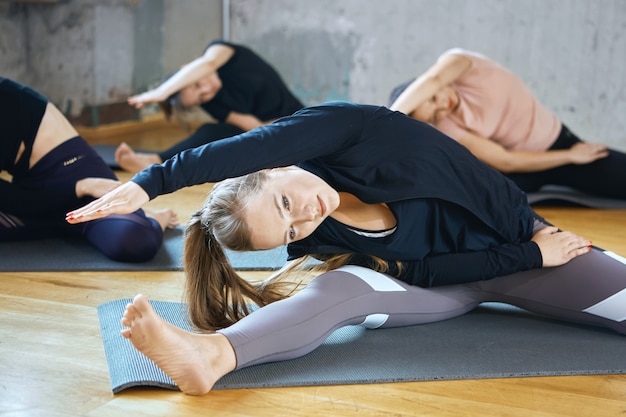
A yoga body isn’t just about flexibility—the ancient practice can boost memory, heart health, and bone strength, according to Anna Magee. In the UK, people are spending around £790 million annually on yoga classes and equipment. While some yoga trends get a bit unconventional—like rage or naked yoga, and poses on paddleboards or horses—the proven health benefits of yoga are rather incredible.
Research from UCLA shows that a three-month yoga and meditation course was more effective than memory exercises in reducing age-related brain changes. Another study found it improved sleep among breast cancer survivors. Lucy Edge, a 53-year-old former advertising executive, turned to yoga instead of antidepressants during a bout of depression. She took a six-month break to study yoga in India and returned feeling happier and more content, although she didn’t achieve the “yoga goddess” body. Inspired by the benefits, she wrote three books on yoga and started Yoga Meds, listing over 300 clinical trials showing yoga’s advantages for various health issues.
If you’re used to memory games like crosswords and Sudoku, it might be time to try yoga. The UCLA study involved 12 weeks of yoga and meditation with 25 adults over 55. Those who practiced yoga saw better improvements in memory and a reduction in depression, anxiety, and stress. In the study, participants practiced one hour of gentle Kundalini yoga weekly, which emphasizes breathing techniques, meditation, and some chanting.
Heart health also benefits from yoga. A review in the European Journal of Preventative Cardiology found that yoga could reduce heart disease risk as effectively as traditional exercises like brisk walking. Stress reduction through yoga can lower blood pressure and heart rate, contributing to better heart health. Dr. Mike Knapton of the British Heart Foundation notes that yoga helps with anxiety, stress, and depression, which are common after cardiac events, and can improve blood pressure, cholesterol, and weight.
For stress reduction, beginners can turn to gentle yoga poses outlined by yoga teacher and nutritional therapist Charlotte Watts in her book “The De-Stress Effect.” Another approach is Restorative yoga, which involves supported poses held for extended periods to give the nervous system a break.
Yoga also shows promise in managing pain and physical health. Musculoskeletal physiotherapist and yoga teacher Sarah Shone developed yoga classes for back pain rehab, with 87% of participants reporting pain reduction. The National Institute of Clinical Excellence (NICE) includes yoga as helpful for lower back pain. Yoga can also help incontinence by targeting pelvic floor muscles and increasing bone density through weight-bearing exercises.
When starting yoga, inform your teacher about any health issues. Choose gentle styles like Hatha or Iyengar yoga, and consult your doctor for any exercise referrals if you have specific conditions. Good yoga props can enhance your practice—considerations include mat location, portability, length for taller individuals, and mat thickness to protect joints. The Valka Yoga Elephant Cork Yoga Mat and matching block are recommended for their durability, eco-friendliness, and support.
Whether you’re flexible or not, yoga can be beneficial. Yin or Restorative yoga uses props for support, Vinyasa Flow syncs movements with breath, Iyengar focuses on posture alignment, and Anusara blends alignment with upbeat flows. Yoga Therapy helps heal injuries or illnesses. Get started and discover the many benefits yoga has to offer.